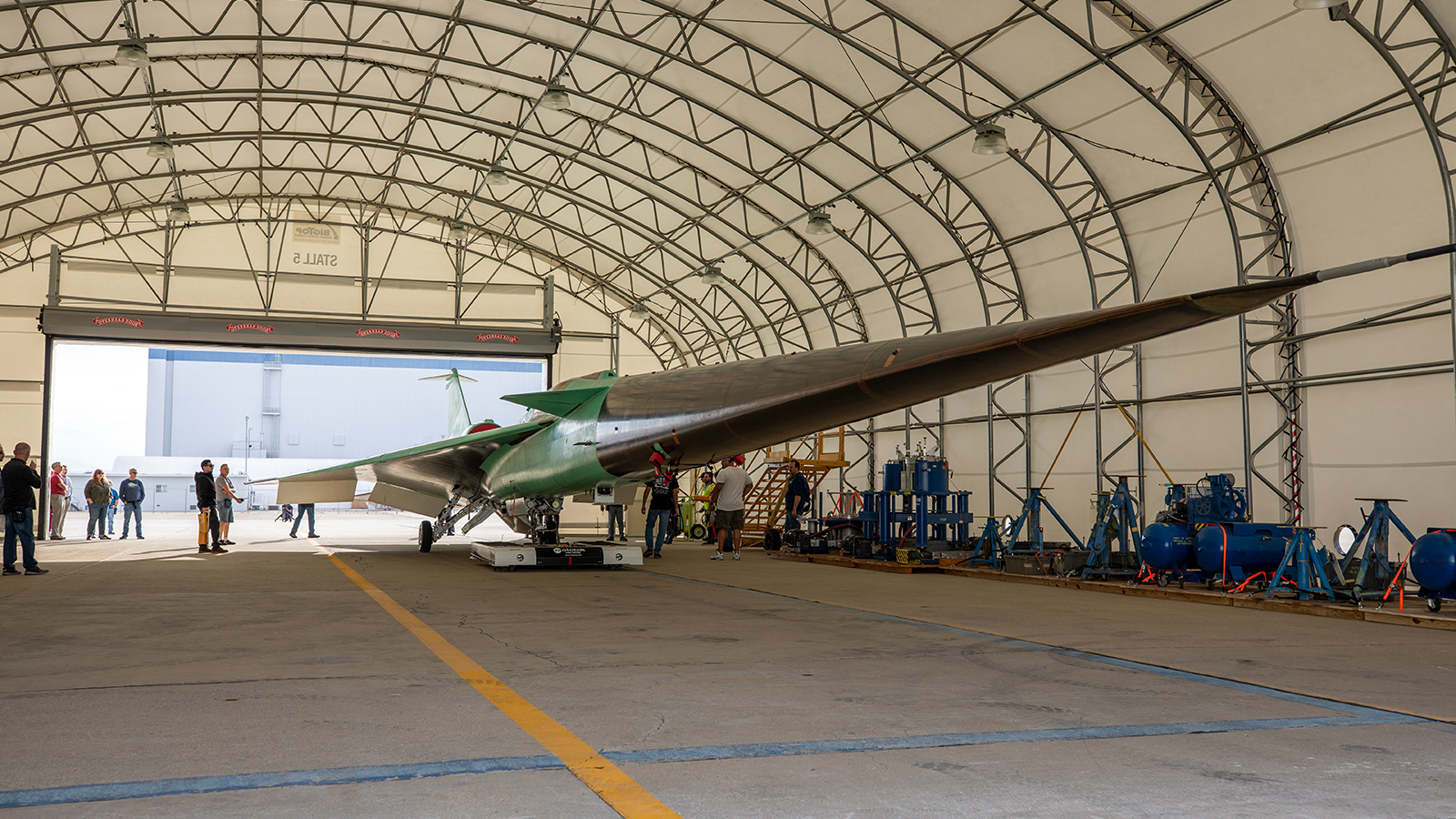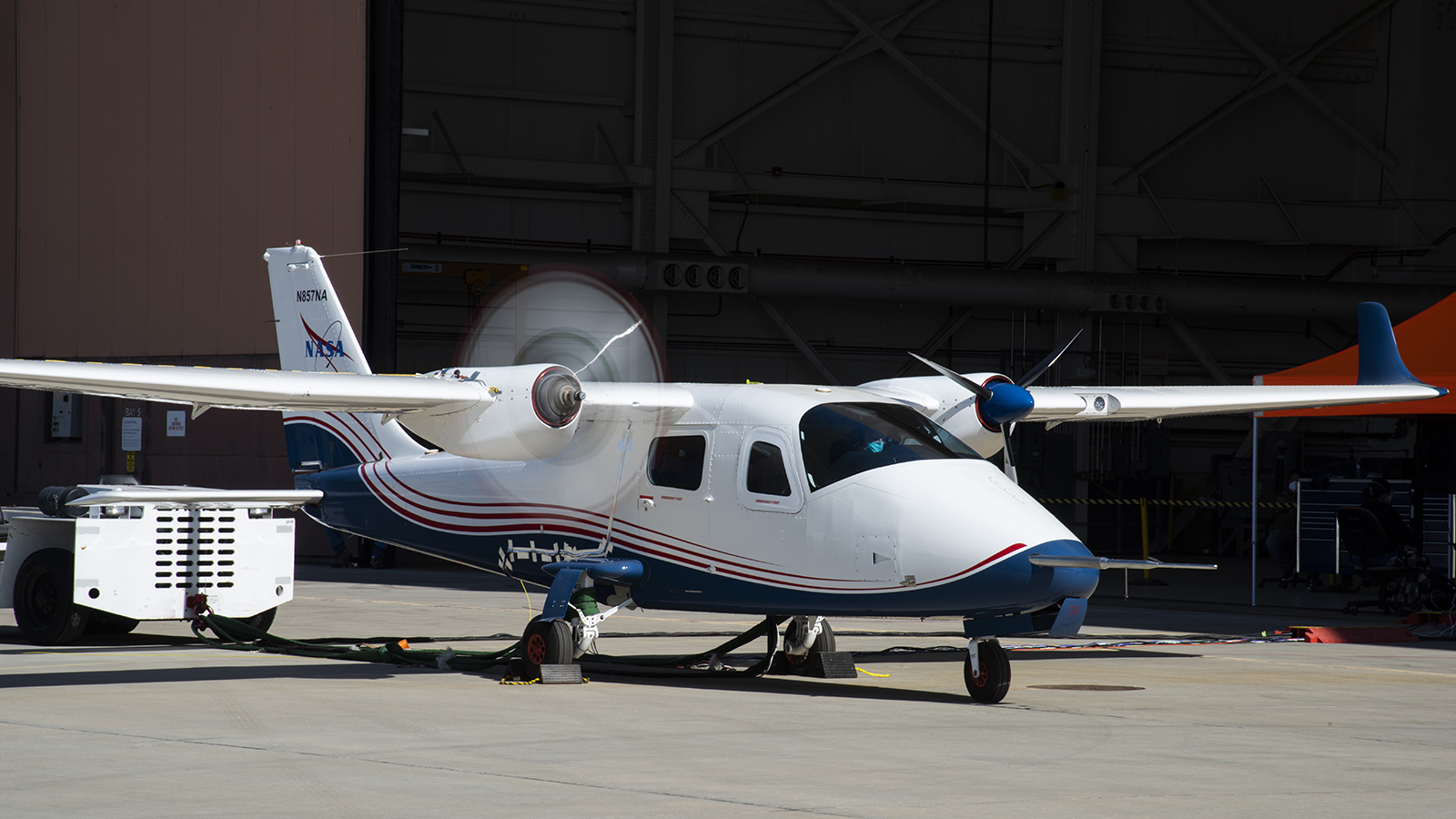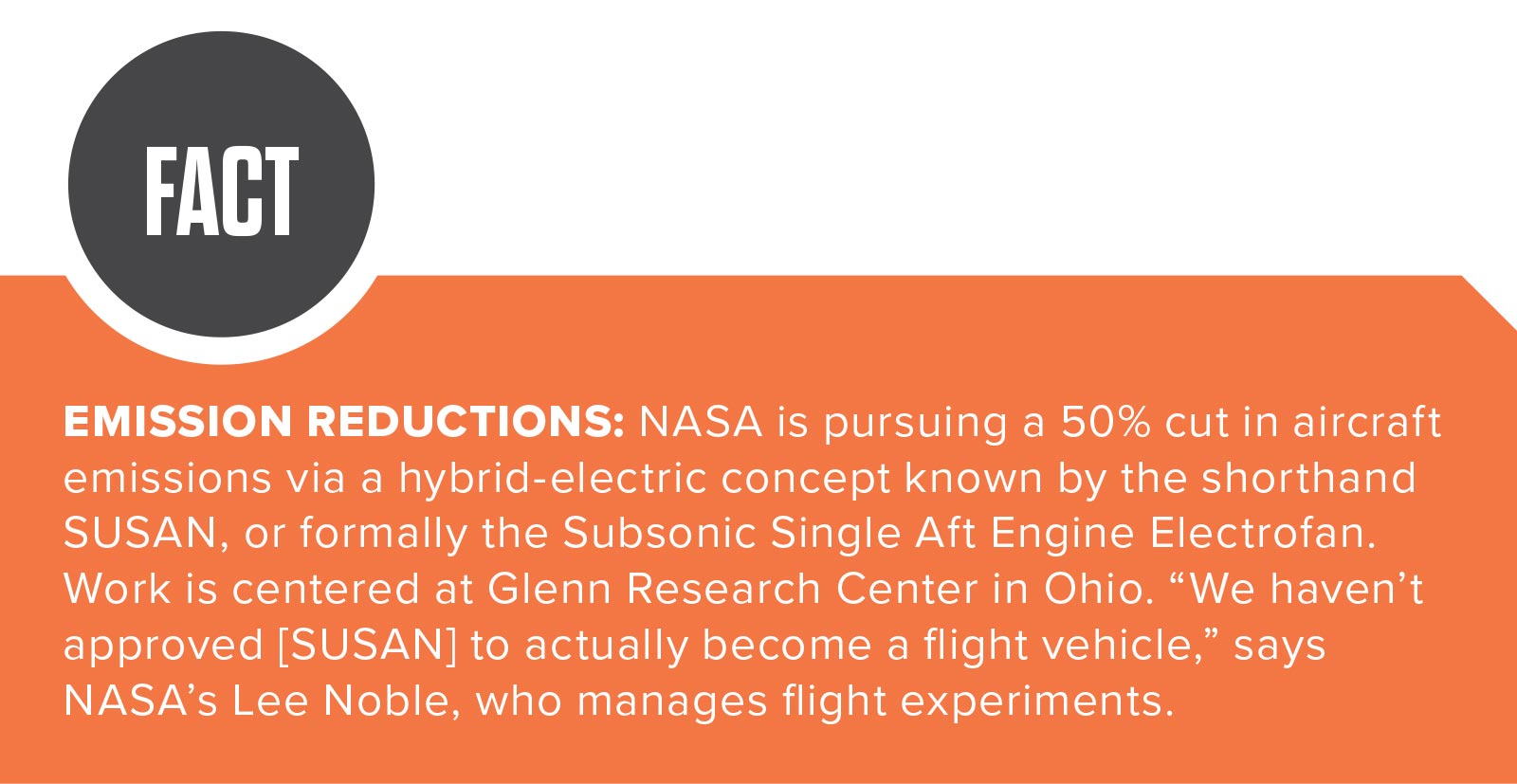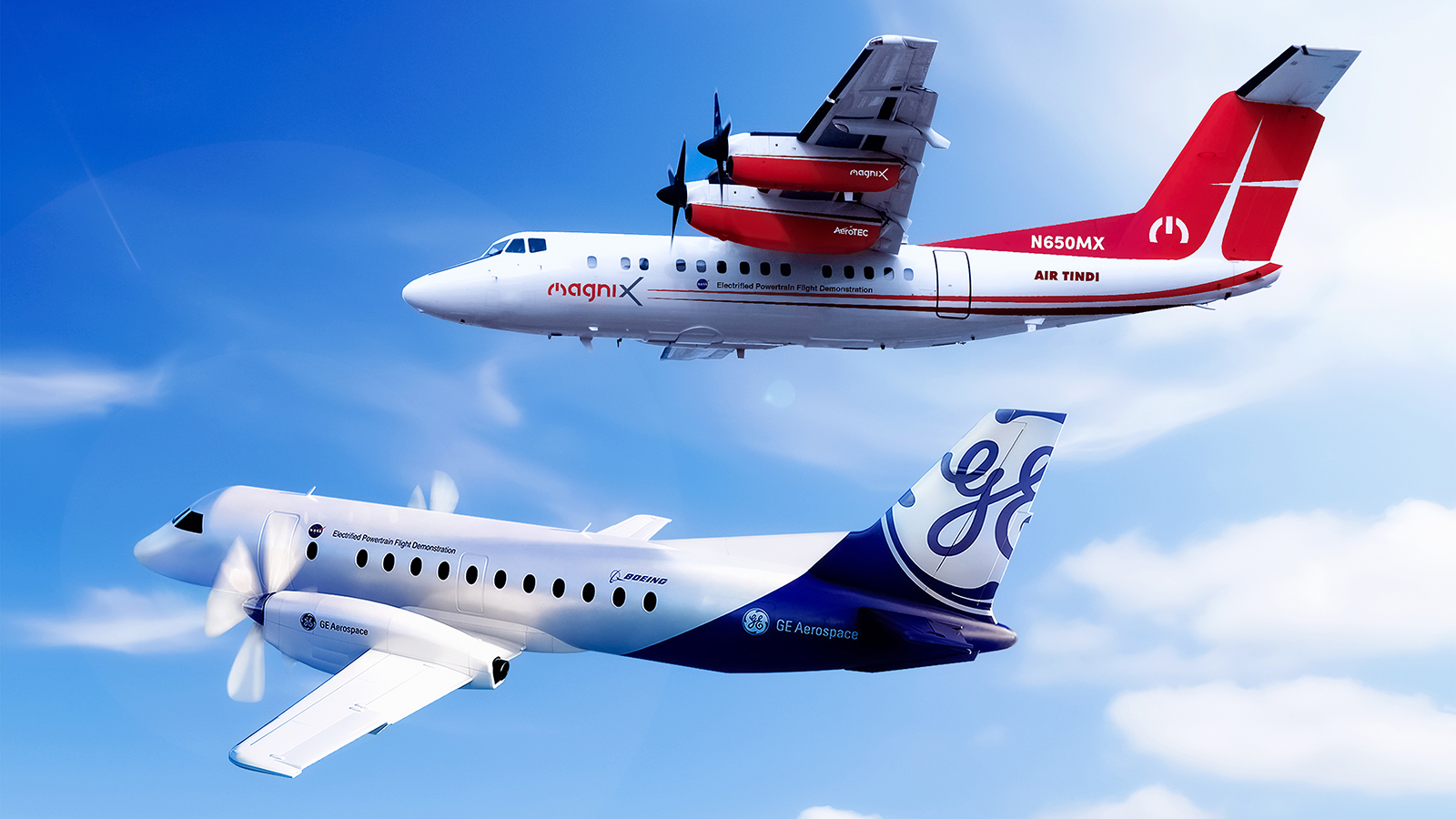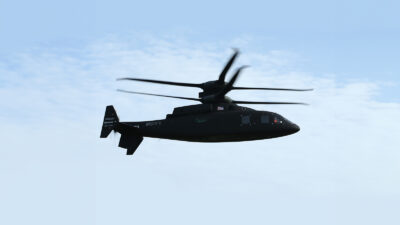NASA stands by its X-planes
By Pat Host and Ben Iannotta|November 2023
A substantial portion of the agency’s aviation budget over the next four fiscal years will be dedicated to building and flying demonstration aircraft, including some with X-plane designations. NASA is staying with that plan, despite setbacks since the initiative was announced in 2016. Why is the agency so determined to continue, and when will the first of the experimental planes fly? Pat Host and Ben Iannotta set out to find out.
NASA has not flown an experimental aircraft in the seven years since it pledged to build and fly five of them to deliver “revolutionary levels of aircraft performance improvements.” The goal was to give the U.S. an edge in the “international competition” to build aircraft capable of satisfying an anticipated doubling in passenger trips by the 2030s, according to a 2016 NASA brochure announcing what was then known as the New Aviation Horizons Initiative. That demand portended an “economic potential of trillions of dollars in the fields of manufacturing, operations and maintenance, and the high-quality jobs they support,” the brochure reads.
While the name “New Aviation Horizons Initiative” was abandoned in 2018, and the number and kind of X-planes and demonstrators has shrunk, what has not changed is NASA’s belief that getting new technologies and configurations airborne is among the most important things it can do to support the U.S. air transportation industry and a new global aspiration to achieve net-zero carbon emissions by 2050, a goal set by the International Air Traffic Association in 2021.
“The changes that you’ve seen from the snapshot in 2016 until now are really just reflective of making sure that these really high-value flight demonstrations — that are also high cost — really are bringing the maximum benefit,” says Lee Noble, director of the Integrated Aviation Systems Program within NASA’s Aeronautics Research Mission Directorate. “If we strictly adhered to the plan from 2016, we would be doing the U.S. taxpayer a great disservice, because we really wouldn’t be flexing with how we see the market developing.”
The agency proposes to spend $1.4 billion through 2028 — a quarter of the total for aeronautics — for these flight demonstrations, including development of two aircraft that have X-plane designations: the X-59 that aims to demonstrate quieter supersonic flight, and the X-66A Sustainable Flight Demonstrator to be built by NASA and Boeing to test a novel wing configuration for fuel efficiency. That’s a switch in scope from 2016, when NASA said it would “build a series of five mostly large-scale experimental aircraft — X-planes.” Also in the conceptual phase this time is a yet-to-be defined Future Flight Demonstrator that might or might not someday receive an X-plane designation, something that must come through a request from NASA to the U.S. Air Force.
In Noble’s view, no one should get hung up about such labels. “We don’t formulate a project and say, ‘Oh, this is an X-plane.’ We formulate a flight demonstration,” he says. “But sometimes we stare at it and go, ‘Wow, this is kind of novel, let’s go ask for an X-plane designation.’”
Noble does not sugarcoat the fact that nothing has been flown since 2016. NASA last month bumped the first flight of the piloted X-59 to sometime in 2024, after the aircraft had to be moved back indoors into the assembly area in Palmdale, California, earlier this year to address airworthiness issues.
“We’ve paused a time or two to make sure that we work through technical issues and really have an aircraft that’s safe,” Noble says. Plans call for a pilot to fly the aircraft over populated areas so that residents can be surveyed about the sonic thump, rather than a boom, that the plane is supposed to produce.
As for the all-electric X-57, Noble says it was wise to shift the project into a closeout phase without ever flying the modified Tecnam P2006T prop plane. It was to have been flown with various electrification technology and wing configurations under a series of “mods.” A potentially dangerous issue with its motors was discovered earlier this year, and solving the problem would have spilled into fiscal 2024, Noble says.
“When we looked at the benefits of how X-57 has already contributed, they’ve already punched their ticket in terms of being a pathfinder,” he says, referring in part to a potentially dangerous battery issue resolved during its development.
Will Congress be willing to continue to fund NASA’s flight demonstrations, given that none have flown? Noble does not offer a prediction, but he says NASA has been open with Congress, and the White House for that matter, about the issues it has faced. “I think we’ve been really transparent with our stakeholders, both at OMB [the White House office that creates the president’s budget request] and Congress about the progress we’ve made on all of these. And thus far, they seem to acknowledge that we’re working through these things credibly,” he says.
None of which means that flying isn’t preferable. “Unless we bring [technologies] to a readiness level of six or seven,” — demonstration in a relevant environment, meaning in flight in the case of an aircraft — “industry really has a hard time picking those up and transitioning them into products.”
Noble is, after all, in the business of making sure flight technologies work together properly. “Sometimes you want to understand how technology A, B, C and D actually behave together as a system on the aircraft,” he says. “And again, we can do all of that when we go to fly.”
Robert Kraus, dean of aerospace at the University of North Dakota, says NASA’s demonstration projects are particularly valuable to newcomers to the field. “If you are a startup company making a new business, you are not going to have the time to get to a viable product that is profitable” without help, Kraus says. “The only way to get to that point is to have the government partner with businesses, labs and companies.”
Startups, however, aren’t the only beneficiary — a case in point being the X-66A, whose approach of improving fuel efficiency by shifting to thin wings supported by trusses was just one of several non-tube-and-wing designs vying for demonstration back in 2016. Boeing will own the aircraft, with NASA playing a supporting role under an arrangement that will have an aircraft being developed under a Funded Space Act Agreement. “It’s different than anything we’ve ever done,” Noble says.
While X-66A is novel in terms of contracting, not all are convinced the aircraft will earn the stature of other X-planes throughout history. In the view of Dan Patt, who holds a Ph.D. in aerospace engineering and is a former DARPA manager, the development will no doubt present engineering and integration challenges. From his vantage point at the Hudson Institute think tank, he sees the project as more of an industrial policy effort to help Boeing compete against Airbus than an effort to break untrodden aerodynamics ground. He noted that the industry has known about truss-braced wings for decades.
On the technology front, Noble describes the X-66A as worthy of its experimental designation given the potential shift away from the conventional tube-and-wing designs that have dominated air travel for decades. “That’ll just be huge,” he says. “We specifically said, ‘Let’s focus this one on airframe technologies. Let’s not bring new propulsion systems onto the aircraft.’ That’s kind of too many miracles in one place.”
So, at the end of the day, NASA stands by its X-planes, or its demonstrators, viewing them as a linchpin in the race toward cleaner, partially electrified air travel. “In the current environment, we really want to make sure that these technologies that we develop really do have a big impact on U.S. competitiveness, on sustainability of the commercial aviation fleet,” Noble says.
Going airborne
a
NASA’s 10-year X-plane initiative announced in 2016 has morphed into four projects. Though none of the aircraft have been flown yet, the X-59 supersonic demonstrator is poised for its inaugural flight in 2024, NASA announced last month.
a
X-59
This demonstrator, which NASA now plans to fly for the first time in 2024, remains in the final stages of development by Lockheed Martin Skunk Works in Palmdale, California. Plans call for a pilot to fly X-59 over various populated areas in the U.S. to see if the sonic thump from its sleek shape will be acceptable to residents. The thinking is that the results of these community overflights could prompt regulators to lift the prohibition on civilian supersonic flights over land in the U.S. and elsewhere. Workers have encountered multiple technical problems during construction, however. Last year, it took several attempts to fit the General Electric F414-GE-100 engine into the aircraft without interference, although NASA says this was not a significant issue.
“When we installed the engine, we did our best to take blue light scans of the engine bay and the engine to make sure there wouldn’t be any interferences,” says Lee Noble, director of NASA’s Integrated Aviation Systems Program. “But we found a couple minor ones,” he adds, and that required taking the engine out and reinstalling it “probably two or three times” until the right fit was achieved.
In August, after a stint on the flight line, “we did move [X-59] back indoors to the assembly area because there were some components that we realized either needed some upgrade or some kind of replacement,” Noble says. Those details are now being worked.
In 2016, NASA said it expected X-59 to fly for the first time “in the 2020 timeframe depending on funding.”
Electrified Powertrain Flight Demonstration Project
By mid-decade, two teams are to fly different versions of megawatt-class hybrid -electric powertrains. The goal is to produce enough electricity to someday power a hybrid passenger aircraft — either a regional aircraft or the equivalent of today’s single-aisle Airbus A320s or Boeing 737s.
NASA’s Lee Noble says the idea was born in a 2018 strategy discussion. “The thing that bubbled up to the top was: If we could bring megawatt-class electric motors — machines — to flight, that’s the sweet spot that impacts all the way from small general aviation aircraft up to single aisle transports,” he says. “This is really an enabler for turbine engines of the future, where maybe it’s a hybrid engine system where it’s not just running on jet fuel, but it also has electric augmentation.”
GE Aerospace of Cincinnati will test its version on a Saab 340B turboprop, although the company’s goal is a single-aisle, hybrid jet. Boeing’s Aurora Flight Sciences company in Virginia is assisting GE with the Saab modifications. Meanwhile, magniX of Washington plans to demonstrate its version on a Dash 7 turboprop. “We have two different approaches because GE is of course an established OEM [original equipment manufacturer]. MagniX is a newer entrant to the community but very nimble and very focused and has already flown electric aircraft,” Noble says.
X-66A Sustainable Flight Demonstrator
The aircraft will be built on the frame of an MD-90 airliner at Boeing’s facility in Palmdale, California. The aircraft’s wings will be removed and replaced with longer, ultra-thin wings and carbon fiber support beams. This truss-braced wing design is supposed to deliver 10% better fuel efficiency if paired with conventional jet engines and up to 30% better efficiency when paired with an advanced jet engine. Boeing last month announced it had selected Pratt and Whitney’s geared turbofans, but neither company nor NASA has specified the fuel efficiency these engines will yield. Plans call for a one-year flight campaign starting in 2028. Boeing is developing the aircraft under a Funded Space Act Agreement with NASA. The agency plans to spend $425 million, and Boeing will spend $725 million, says NASA’s Lee Noble.
While Boeing will own the aircraft, and NASA must be careful not reveal its partner’s proprietary information, Noble anticipates sharing enough details to inspire innovation elsewhere. “As we go to conferences, we’ll be careful to report things in a way that doesn’t kind of give up the proprietary nature of their design but still shows the benefits of performance and really how the X-66 behaved in flight,” he says.
He also notes that NASA selected Boeing as a result of a competition: “I couldn’t comment on the number of proposals we got, but it was multiple, and Boeing just really rose to the top in terms of their vision for the future and how novel their concept was,” he says.
and in the process of being shut down:
A
X-57 Maxwell
NASA plans to hold a public “technical closeout meeting” sometime between January and March for this project under which an electrified Tecnam P2006T would have been flown to demonstrate distributed electric propulsion. The agency decided earlier this year that it would begin shutting the project down to meet a fiscal 2023 deadline that was set in 2021. In theory, the agency could have extended the project to begin flying a series of planned “mod” flights that would have tried out a range of electrification technologies and configurations.
Development at Armstrong Flight Research Center in California had been slowed by the pandemic: “X-57 was all about being around the aircraft and integrating things. So unless you could show up at the center and work, you couldn’t do any of that remotely. So, they were impacted by covid in a unique way,” says NASA’s Lee Noble. But over the winter at Armstrong, “design deficiencies” related to the aircraft’s motors were discovered, and these would have put the pilot at risk, NASA said in an email statement. The discovery sparked multiple “Tiger Team” meetings between NASA officials and ESAero, the X-57 prime contractor in California, which proposed modifications to the motors.
“ESAero believes that these simple fixes along with successful ground testing and frequent inspection would have been sufficient to accept the risk and go to flight by September,” said Andrew Gibson, CEO of ESAero, in an email. NASA nevertheless decided to begin the closeout process, noting in its statement that “the NASA Armstrong airworthiness review board concurred with the project’s safety and risk assessment.”
